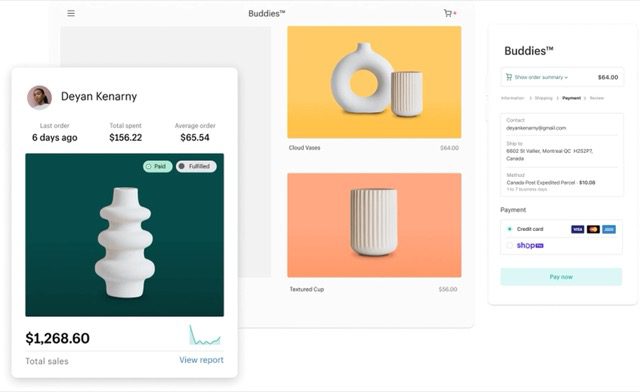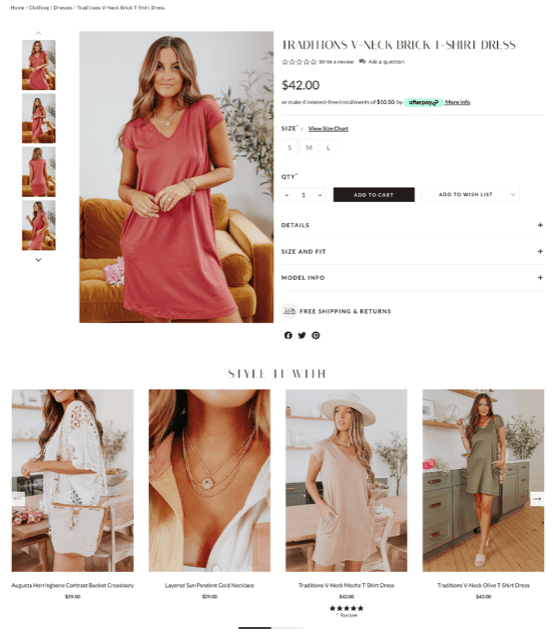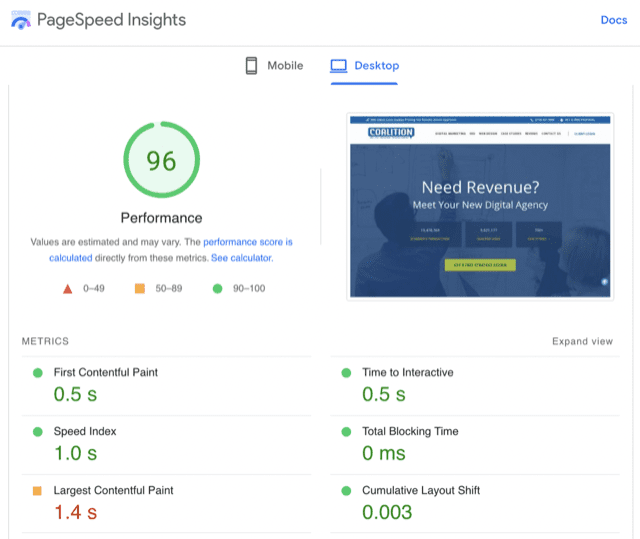
The ecommerce game is constantly changing. Consider redesigning your site every four years to keep up with the latest software and stay on-trend with consumer expectations. Within 50 milliseconds, visitors will judge your site. Off-putting website elements may cause consumers to bounce off the page and distrust your brand. This will negatively affect the perception of your brand from the beginning. Here are six strategies to keep consumers engaged and inclined to purchase on your ecommerce site.
Table of Contents
1. Find a Transferable Platform
The Bureau of Labor Statistics cited a 57% employee turnover rate across the board this past year. High staffing turnover in the ecommerce management team can be disruptive and become an obstacle to your goals. For example, turnover can cause reorganization within the company and slow down initiatives in progress.
All too often, ecommerce businesses only have one or two people that know how a platform works. If they’re on vacation, sick, or move on from the company, it can drastically disrupt the workflow.
So what can you do to mitigate the issues of high staffing turnover and difficult training requirements?
Choose a platform and an approach to a website build that reduces the challenges of growth and the present job market. Look for ecommerce platforms with an easy learning curve and training resources. You may also consider:
- Ease of Use – Choose a digital platform that is easy to design and set up. Designers and developers may be costly, so you can consider using templates that are included.
- Integrations and Third-Party Apps
Integrations and Third-Party Apps
Every brand has many moving parts to its business. There’s marketing with an array of channels, including both paid and organic channels. Then there’s fulfillment, customer support, accounting, and other departments.
Rather than bouncing between software and access data, you can smoothly integrate software into the system. This creates bidirectional flows of information between two platforms so that data only needs to be entered into one system.
Problems may arise so it’s important to address the issues with a user-friendly platform. Pay attention to support by tier since some will offer better support for higher-priced tiers.
2. Expand To Be Omnichannel

Source: Shopify
With ecommerce products, there’s always an opportunity to expand to new markets. A research study performed by Harvard indicated that 73% of customers connect with a brand via multiple touchpoints before making a purchase. The study also shows that customers are more likely to become loyal repeat shoppers and recommend the brand to family and friends.
A single channel ecommerce means you only sell a product through one sales channel such as an ecommerce store, online marketplaces like Amazon, or a brick-and-mortar location. Single-channel also means that you’re selling direct-to-consumer (DTC) or business-to-business, not both.
Omnichannel means to sell on multiple channels, providing customers with a seamless experience across the platforms. As per the Harvard study, customers who navigated to over four channels spent 9% more compared to brands with only a single channel.
Sell to Both DTC and B2B Ecommerce
If your brand has been selling directly to consumers, then you are potentially missing out on a lot of growth opportunities. U.S. B2B ecommerce is expected to hit $1.8 trillion in sales by 2023. Here are some advantages of expanding to B2B commerce:
- Access to new audiences and greater visibility
- Increased average order value and order volume
- More support from a retail partner
- Improved credibility
- Benefiting from another brand’s expertise and success
However, you might be wondering, how can you service wholesale clients without losing your DTC customers?
The key is to implement a multi-pronged strategy that differentiates the DTC product offering from the B2B.
- Sell product exclusives or different items – You’ll need to ensure that your loyal DTC customers don’t feel isolated. You can offer select products to wholesale clients while giving regular customers more options.
- Create an excellent customer loyalty program – 66% of customers modify their spending to earn more points for loyalty programs and 34% of consumers strongly believe those programs are trustworthy. Reward your retail shoppers with points that lead to store credit or special promotions. This gives customers an incentive to purchase directly from your store.
- Pricing strategy – Of course, wholesale clients are expected to receive lower prices. However, you can offer DTC customers exclusive programs that wholesale clients don’t get. For example, product bundles, gifts with purchases, and coupon codes are great ways to incentivize retail customers.
Make sure to find a platform that has the functionality to support both DTC and B2B strategies. This lets you diversify your product offerings and reap the benefits of both markets.
3. Capitalize on Social Commerce

Forward-thinking brands are beginning to sell on social media in addition to ecommerce platforms. These social platforms allow brands to set up their own stores. By doing so, consumers can easily make a purchase without leaving the site.
According to Semrush, social platforms like Facebook, Instagram, and Twitter are among the top 10 most visited websites. Utilizing social commerce may lead to new markets and increased sales. On average, we spend about two hours and 24 minutes on social media, so engaged users may be more inclined to make a purchase from an account they like.
Social platforms serve as an excellent way to promote user-generated content as well. Brands can use influencer marketing or user-generated content to help increase their reach. Consider incentivizing customers to share their experiences with the product by offering discounts for product reviews on social media. Also, find influencers with an audience that you would like to appeal to. These partnerships help leverage social commerce in your favor.
Rather than spending time learning and optimizing for each platform, it’s best to look for an ecommerce platform that enables social commerce. This means the social platforms are already integrated into your ecommerce platform, allowing you to publish products and sales promotions across all channels easily.
4. Create Content-Driven Experiences

Setting up product pages and running advertisements can generate sales to an extent. Still, long-term ecommerce brands looking to capture market share in their industry should look to create content-driven experiences through conversation marketing tactics.
When creating blogs and social media posts, consider using a wide range of content, including:
- Demos
- Unboxing videos
- Listicles
- Style guides
- Product reviews
These forms of content are engaging and highly shareable, thus making them rank higher on social media and convert well for paid ads. Listicles and product reviews can be great ways to inform users on which products to choose. Consumers who are already ready to buy need some expert advice. If you’re seen as an expert in that particular topic, they may choose to buy from you over other competitors.
For example, a brand that sells office chairs might create a listicle titled “Best Office Chairs for Back Pain.” Furthermore, they can create individual product reviews on each office chair that details the benefits of each feature.
You might be wondering “How do I generate ideas for content?”.
Look for trends where content is ranking well on Google and YouTube, then integrate these trends into your brand. Remember that great content leads to more transactions.
Everyone has had a bad experience with online shopping at some point. I’m sure you can think of a time when you were excited to receive a product, only to find that the product didn’t match your expectations. Perhaps, it didn’t fully match the product description or images or doesn’t meet your needs.
Video can describe products much better than images and pictures can. Demos and unboxing videos give you a closer look at what comes inside the box and how everything works. Consider including these videos on your product page, social media, and even incentivize user-generated content. Encourage readers to post their unboxing videos and reactions on social media. Marketing is much more powerful when it’s echoed by your customers. Not to mention, content can boost SEO, PPC, and conversion rates, thus improving other marketing channels.
5. Focus on Cross-Selling and Upselling
In ecommerce, there are plenty of opportunities to increase profits. Many top brands can topple their competitors because they are willing to outbid other brands on advertisements. That’s because they understand the importance of lifetime value and average order size.
By increasing the lifetime value and average order size, you’ll be able to spend more to acquire each customer. As a result, you’ll be able to grow your brand and sales.
Cross-selling and upselling is the easiest way to increase profits. This timeless strategy has been used across all verticals. Think about the time you’ve ordered from McDonald’s. After you’ve completed your order, the cashier may ask you, “do you want to add fries and a drink with that?”
Cross-selling is the process of recommending a different item that is complementary to the original item being purchased. Conversely, upselling is a process to sell higher-end products to the customer.
Here’s how you can implement these ecommerce strategies for your brand:
1. Add product lines and categories that align with current best sellers. For example, a consumer who purchases a grill may need accessories that go along with the appliance.
2. Use plugins and extensions that help automate smart cross-selling and upselling on your online shop. Many platforms have plugins that will analyze your existing sales data and recommend customers’ products based on what other customers have bought together. Including a “frequently bought together” section on your site lets users buy product bundles at a lower price than buying them separately.

3. Cross-sell and upsell across your entire funnel. Selling doesn’t just end with the first sale. There should be many opportunities to sell your customers more items. For example, placing recommended items on category pages, product pages, and checkout pages can entice consumers to add more products to their shopping cart. Abandoned cart sequences and post-purchase emails should also include opportunities for upselling as well.
6. Make Your Site Faster

Slow website speeds often cause distrust among your consumers. Not to mention, Google also ranks websites with slow load times much lower on the search engine results page. The site of your website affects the user experience. Pages that load within 2 seconds have a 9% bounce rate, while pages within a 5 second load time have a 38% bounce rate.
Start by improving your Core Web Vitals. This may require you to rebuild the site to achieve upgrades. However, newer platforms tend to already have their speed upgraded. Next, establish the benchmarks for speed based on design analysis and review with your tech provider.
Follow these tips to improve your ecommerce site speed:
1. Watch out for premium themes. Although they look great, they can significantly slow down your site speed.
2. Be selective with the extensions or plugins you choose. Extensions can also bog down the site speed. For example, including multiple pop-ups will only slow down the loading time.
3. Think globally. Consider using different domains for different regions to keep the website speed up. If you sell products targeted to specific regions, adding the appropriate domain can improve SEO rankings and load speeds.
Making these common mistakes in your site can greatly impact your ecommerce sales.
Conclusion
The time and effort put into your ecommerce web design and platform can make a real difference. Your brand may stand out above your competitors and your business may continue growing for years to come.
Creating a fully-functional ecommerce site isn’t easy. It requires staying up-to-date with the latest marketing and ecommerce trends. As technology evolves, new platforms and features are bound to arise. It may be beneficial to hire an expert to help you design an effective strategy. For marketing, web design, or web development help, contact Coalition Technologies today!


